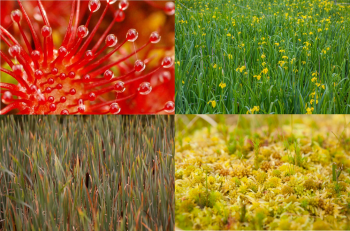Paludiculture: How to and with what plants?
by Roxane Bradaczek (comments: 0)
Two new GMC publications show it

20/12/2022 You happen to have a peatland where you want to implement paludiculture, but don't know how? Convert an entire farm to "wet" agriculture - how can that be done? Or - you might be looking for the biomass from wet land for new products? For questions like these, the new Guide to Implementing Paludiculture (German only) within the GMC proceedings offers information. It aims at land managers, landowners, project sponsors, water and soil associations, government agencies, agricultural advisors, research institutions, and potential utilization companies. The guide covers five areas: Site suitability, planning and permitting for conversting sites to paludiculture, practical tips for establishment and management of sites, as well as utilisation of the biomass produced and support - including examples of implementation.
The publication Potential Paludiculture Plants of the Holarctic (English only) presents which plants are suitable for paludiculture in the Holarctic. In 440 pages, There are profiles of 95 plant species from the Database of Potential Paludiculture Plants (DPPP). Most are promising for sustainable wet land use on peatlands. Some might be considered critically since the paludiculture potential finds its limits, for example, in terms of new peat formation. In the plant portraits, comprehensive information has been compiled on the characterisation of the species, site requirements, cultivation as well as possible uses of the plant.
Source: Greifswald Mire Center











